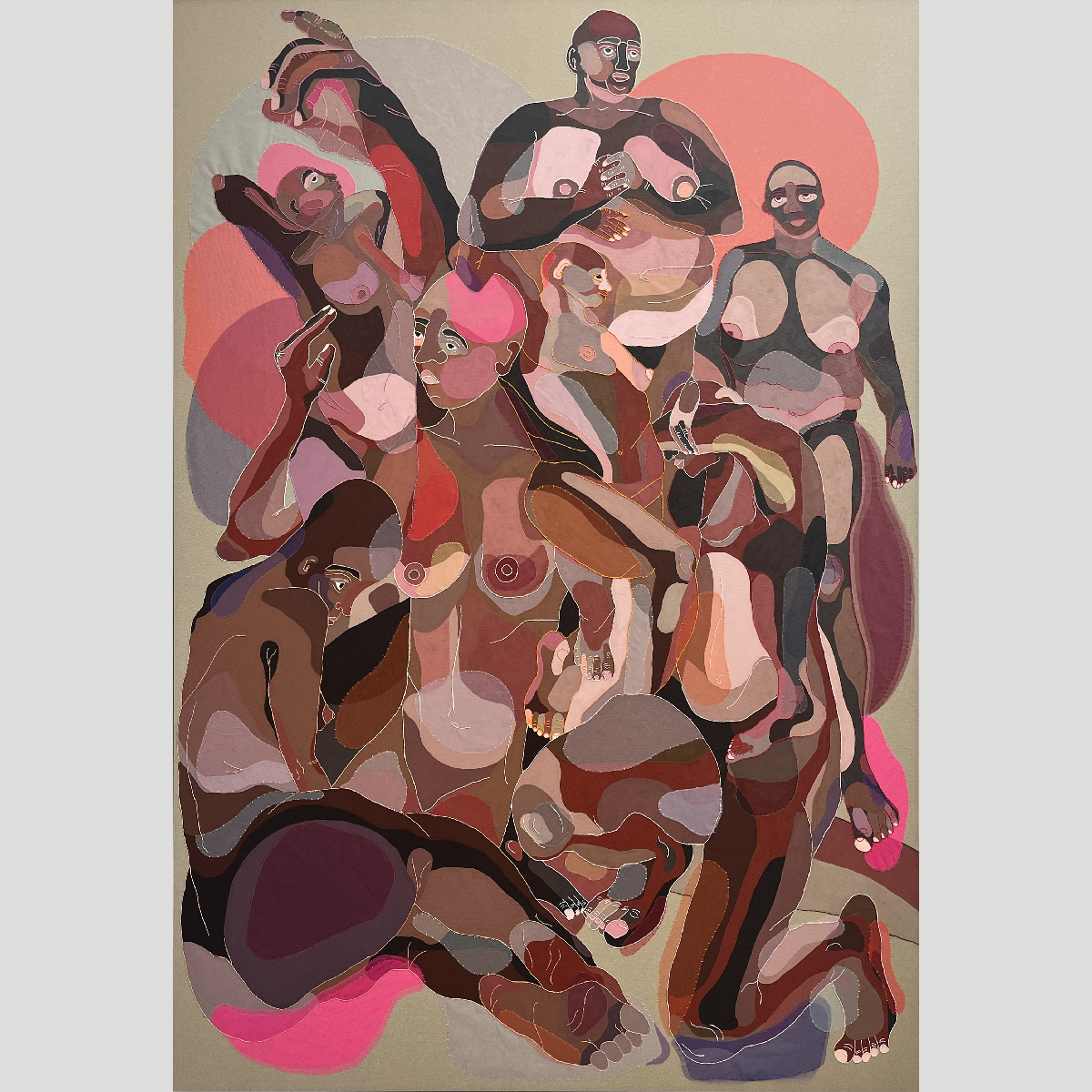Ela Fidalgo (1993–)
De ente et essentia I, 2022
Acrylic, wool, and cotton embroidery and patchwork on canvas
McMullen Museum of Art, Boston College, Gift of Mario Losantos Ucha

The series from which this work comes, De ente et essentia, evokes Thomas Aquinas’s thirteenth philosophical work of the same name, often translated as On Being and Essence. There, Aquinas examines metaphysical questions about being. He argues that God’s existence and essence are identical. God’s nature is to exist immutably and necessarily. For human beings, though, our existence is contingent: we might not have existed at all, or we could have existed otherwise than we do. Fidalgo’s provocative title poses related questions such as: What is the meaning of my own contingent existence? How might I be otherwise? Where is the spark of the divine in who I am?
We see in the multiple layered figures that the answers to these questions are pluralistic and that the human self is always emerging. The project of being human is one of transformation, arising out of a continual and ongoing encounter with possible answers to the question, “Who am I?” and “Who might I grow to become?” The overlapping of Fidalgo’s figural forms also suggests an interplay between the community and individual as the process of our becoming unfolds.
For Fidalgo, questioning existence and its multiple meanings is an embodied, not merely intellectual, process. Against transhumanist approaches that promote the use of technology to “improve” the self, Fidalgo returns us to the human flesh, a “body with imperfection and faults but also full of beauty.”1 The figures’ nakedness reveals the vulnerability of the human person in encountering these questions.
In Fidalgo’s use of embroidery as a medium, we see not only her artistic roots as a fashion designer, but also how the discovery of existential meaning is a process, one that arises stitch by stitch, until a pattern emerges. The sheer size of the work, coupled with the detailed embroidery, invites us to engage with both the macro- and microcosmic in our own lives.
1. “Ela Fidalgo—De ente et essentia,” La Bibi Gallery, posted Oct. 8, 2022, https://www.youtube.com/watch?v=WzotgRFXPsE.

Ela Fidalgo
Artist
I created this work with all my heart and consciousness, trying to speak about the true essence of the human being, addressing the wound and vulnerability, questioning the spark of life that resides within the individual. Analyzing the words themselves, the BEING and the HUMAN, this issue is inevitable in my work, as I carry a multitude of traumas, fears, and insecurities that lead me to observe in order to understand the external world. [...]
I believe in making art as society is made, I believe that art is the tool, art has the ability, as an essay, to create new forms of extending democracy. Art is the instrument. I see cities as places of care, which is why spaces like museums, universities, and institutions need to be spaces of listening and assistance to build new models. New ways and modes of understanding, comprehending, and caring for the world.
Will we be able to learn from observing our shortcomings to dare to take a greater reflection on what defines us as a society and how we want to live in the future? How can we turn solidarity into action? What about compassion? And empathy, mediation, extending a hand to others...? My intention is to find the door, the window that the viewer or passerby opens. I still have much to study, much to observe, much to unravel, and much to sew.1
1. Ela Fidalgo, letter to Nancy Netzer, Apr. 28, 2024.

Marina Berzins McCoy
Professor, Philosophy